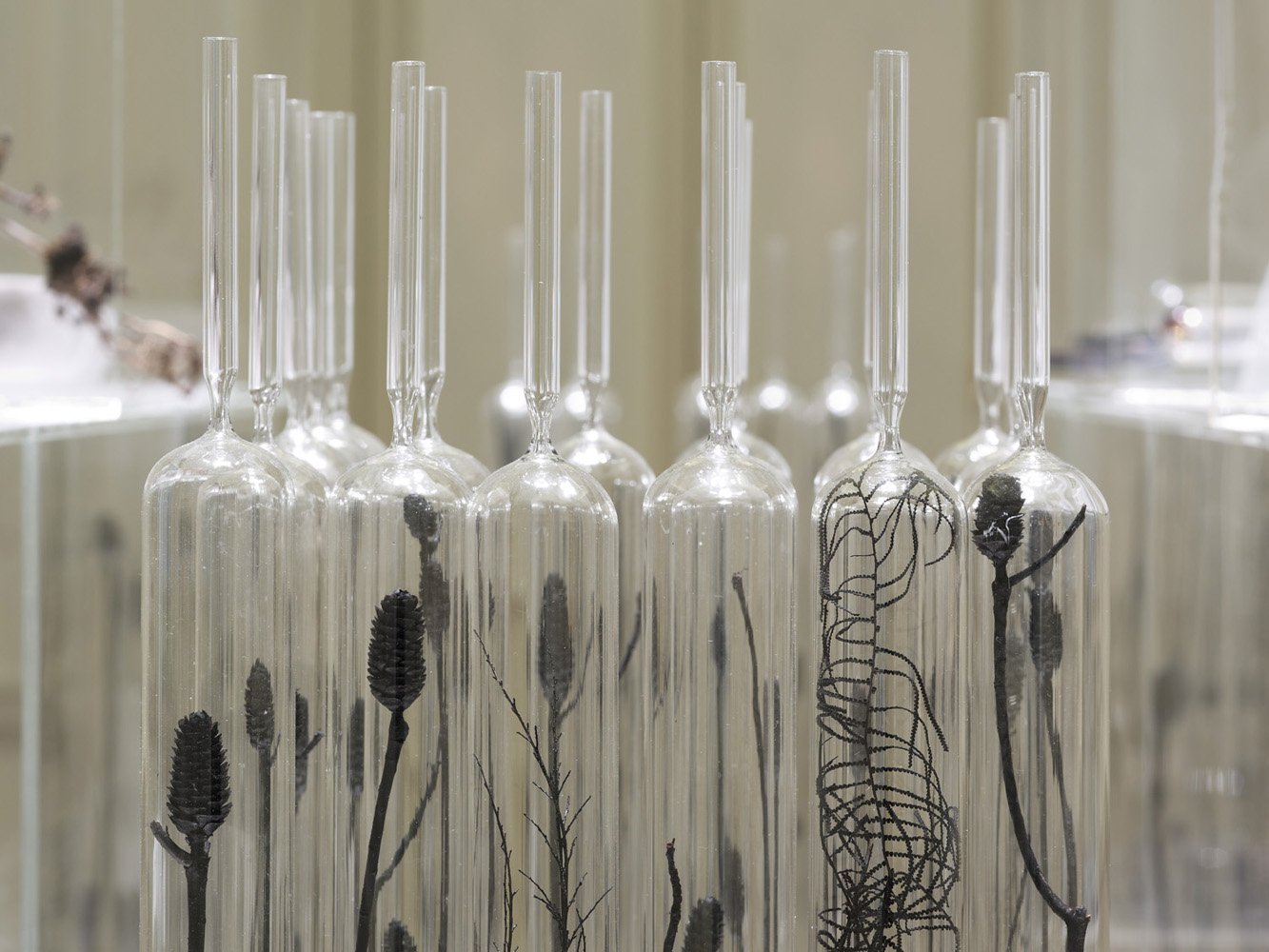
Natural History








Tears of dust
Museum of Australian Photography, 2024
Janet Laurence’s immersive, multisensory installation Tears of dust reflects upon the fragility and power of the natural environment. Her intensely seductive and yet haunting evocations of the natural environment create encounters with our changing planet.
In this world premiere show, these wunderkammers (cabinets of curiosity) provide windows into our fragile ecosystem—of breathing forests, extreme weather events and dying glaciers—and offer a sense of connection with, and mourning of, our vanishing life world.
When encountering these familiar and yet otherworldly environments, we become profoundly aware of the interconnection of all life forms and the alchemical wonder of plants' ability to regenerate.
Show curated by Anouska Phizacklea
Photos courtesey of the Museum of Australain Photography
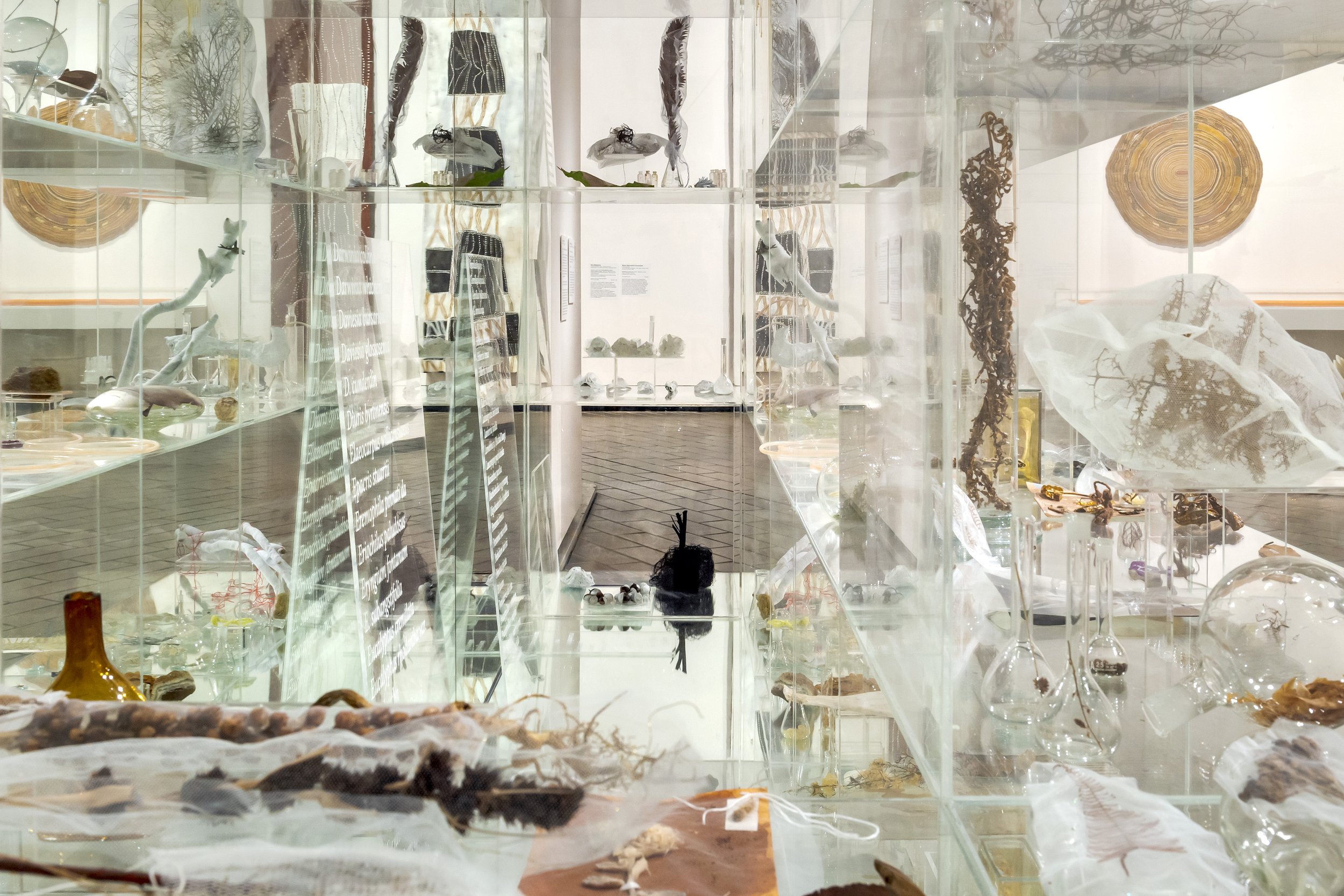

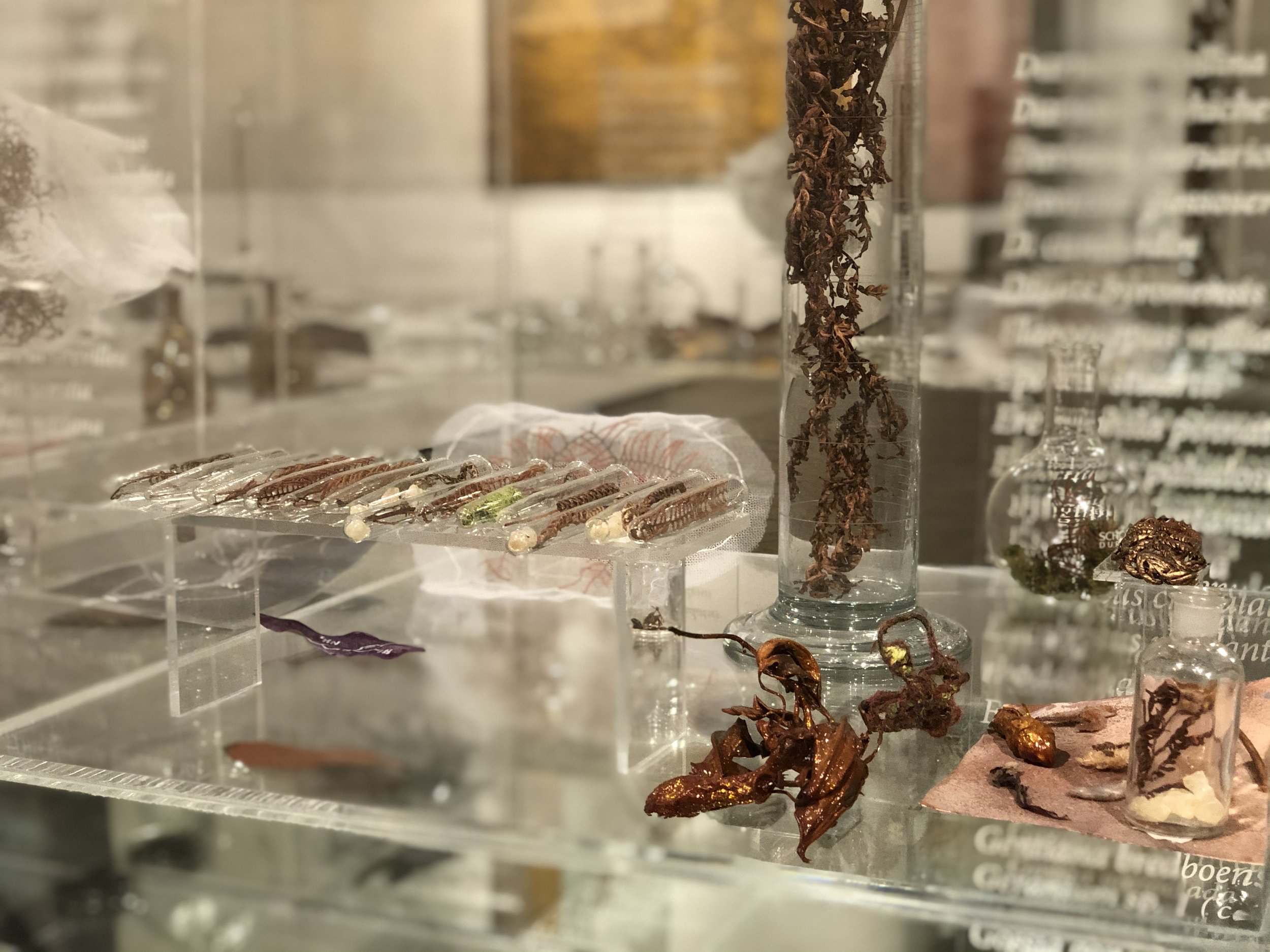
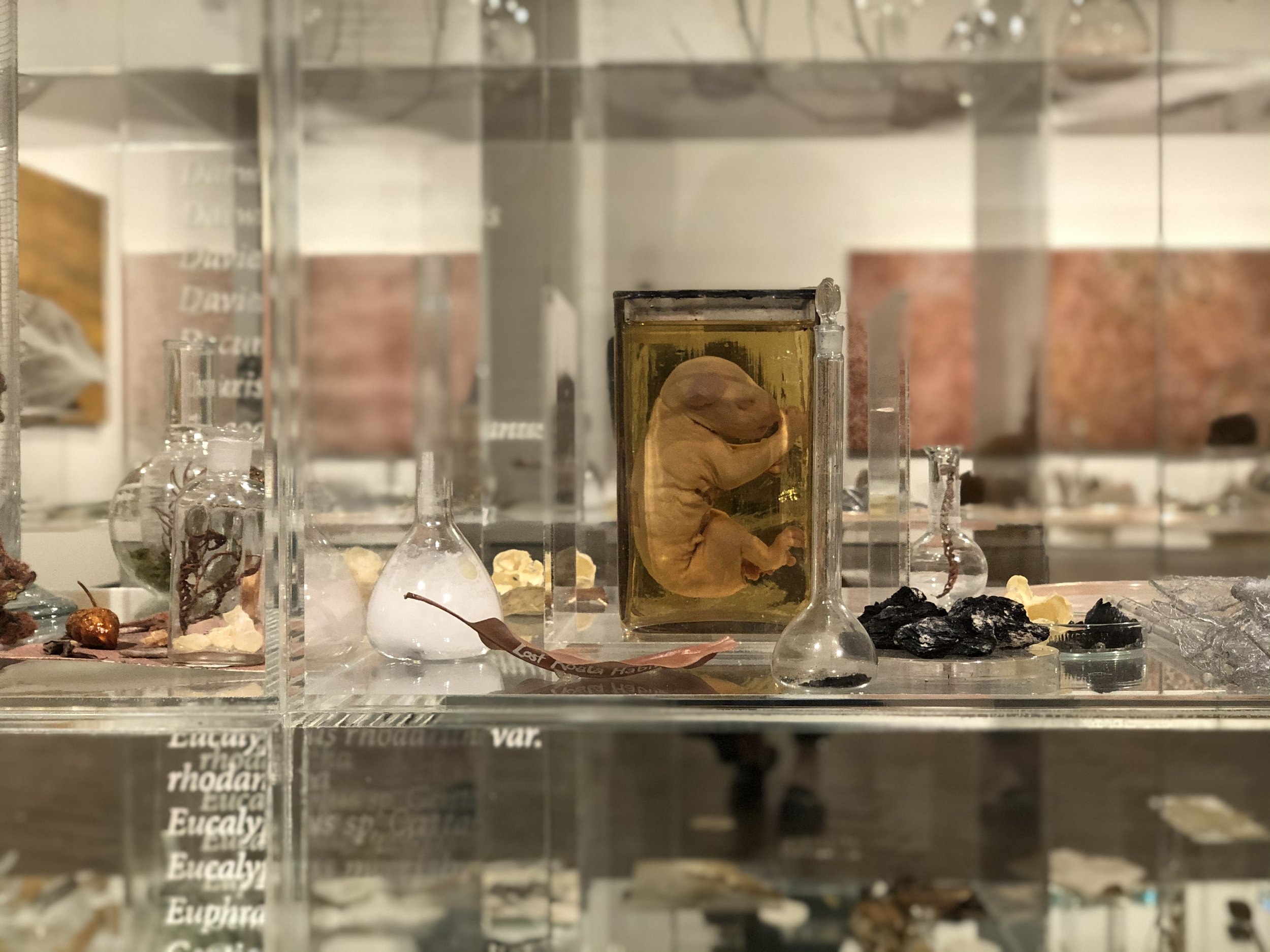



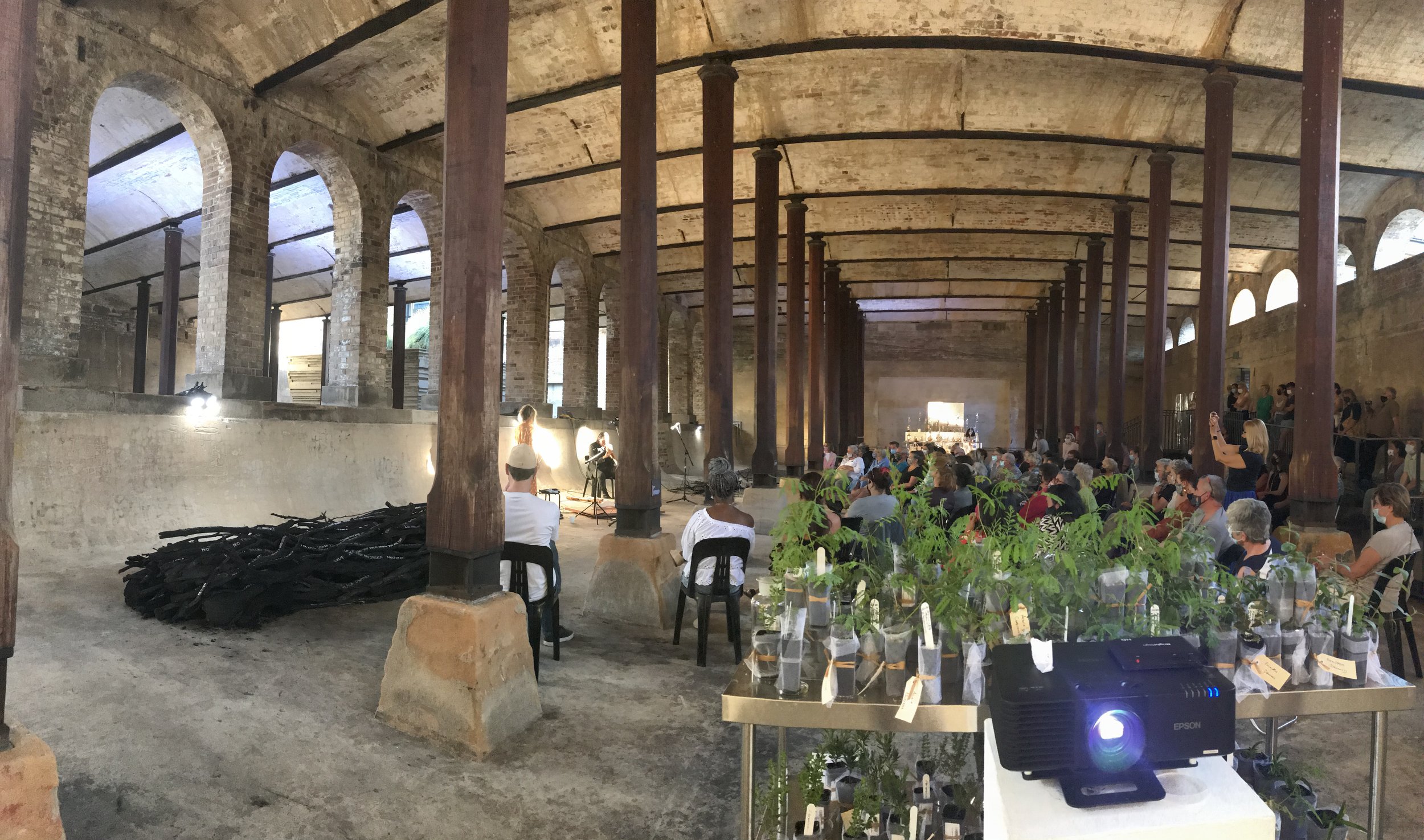
Requiem
Know My Name, National Gallery of Australia collection, 2020
Made in the wake of the 2019-20 bushfires, a hailstorm that shattered the glasshouses of the CSIRO and a global pandemic, this work draws together bleached, brittle, extinct, and endangered specimens. Titled Requiem, the work is a lament for a world in danger and a call for greater awareness of environmental issues.
Botanical specimens, branches, thread, gauze, seeds, bird and bat skeletons, burnt wood, glass vessels, mineral rocks, crystals, painted paper, sketch book, pigment, hand-blown glass, bird skins, nests, duraclear, inkjet prints, mirrors, mesh, sulphur-coated leaves, Chinese calligraphy, buffalo scapula, taxidermy owl, books, lenses
Curated by Deborah Hart and Elspeth Pitt


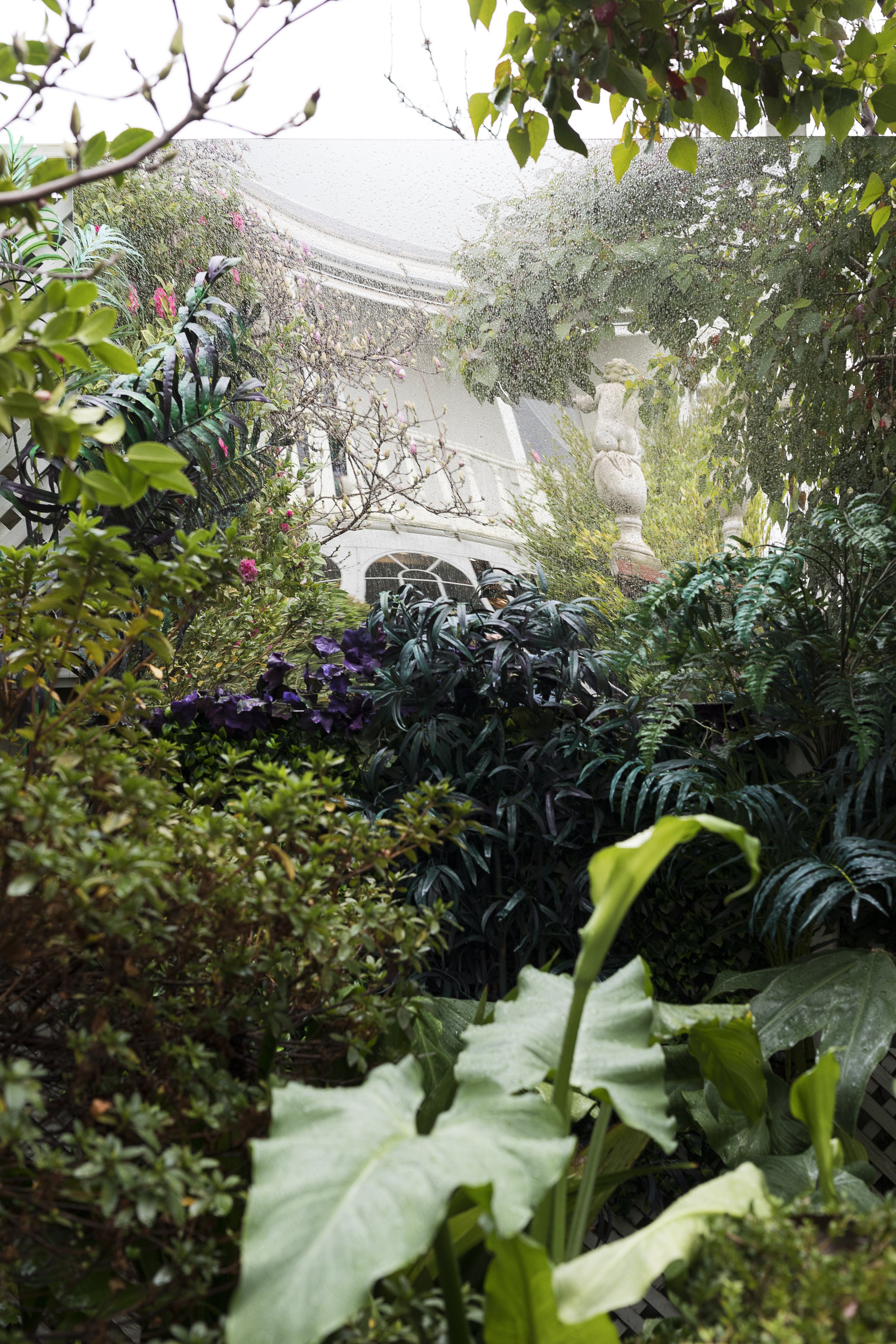



Palm at the end of the mind
The Johnston Collection, Melbourne, 2020
The Palm at the End of the Mind involves Janet Laurence’s exploration of the Johnston collection alongside her own creative practices - collecting and saving, nature and the environment - within the context of Fairhall exhibition-house. William Johnston’s own collecting and gathering from around the world, along with his love of gardening, underpinned and reflected Laurence’s ideas. Johnston found comfort, beauty and solace as he collected plants on his international travels, created, nurtured, assembled and loved his own gardens with care.
Items from The Johnston Collection, botanical specimens, branches, glass vessels, mineral rocks, crystals, painted paper, pigment, hand-blown glass, nests, duraclear, inkjet prints, mirrors, mesh, sulphur-coated leaves, books, lenses
Photography by Adam Luttick
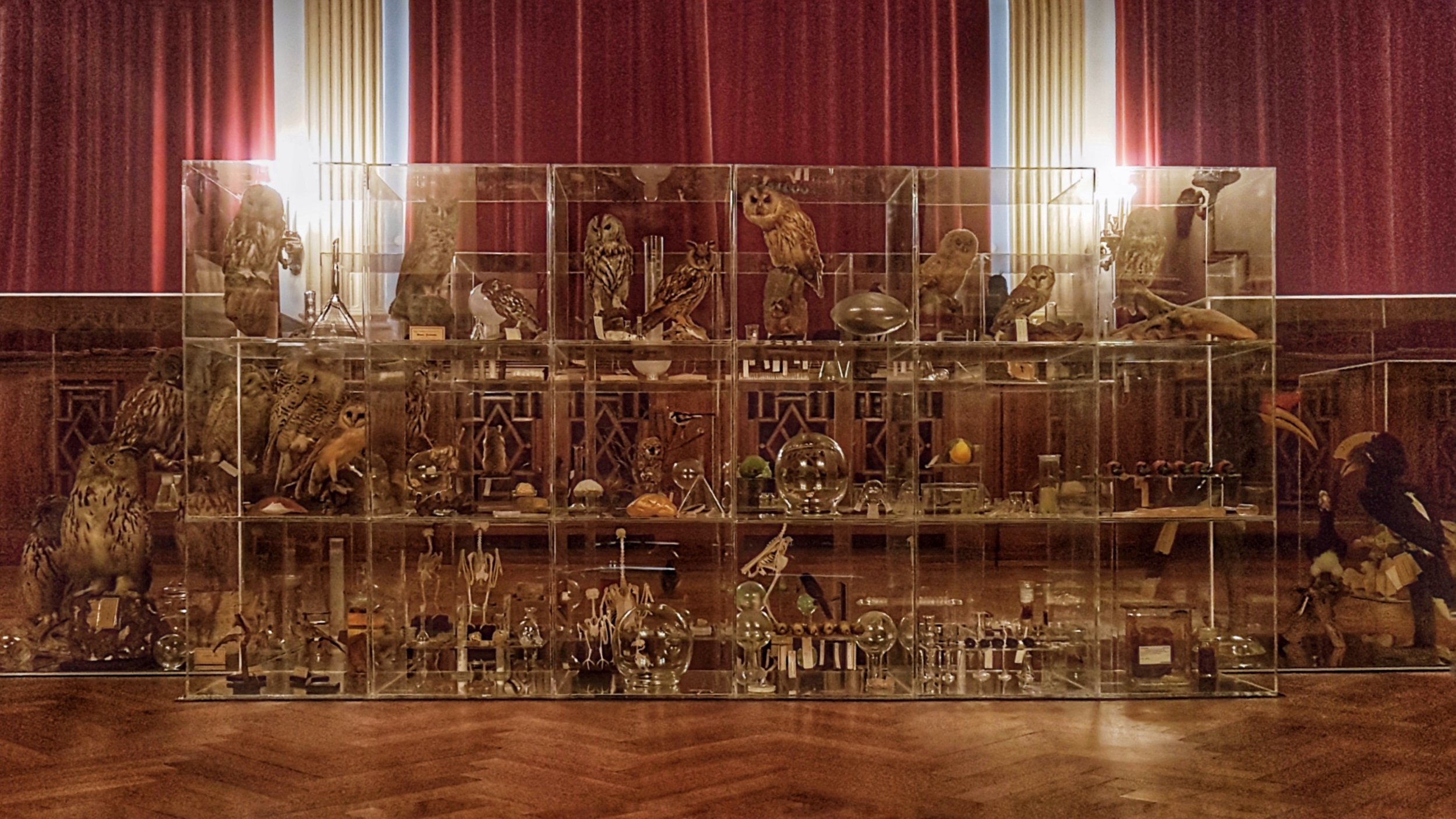
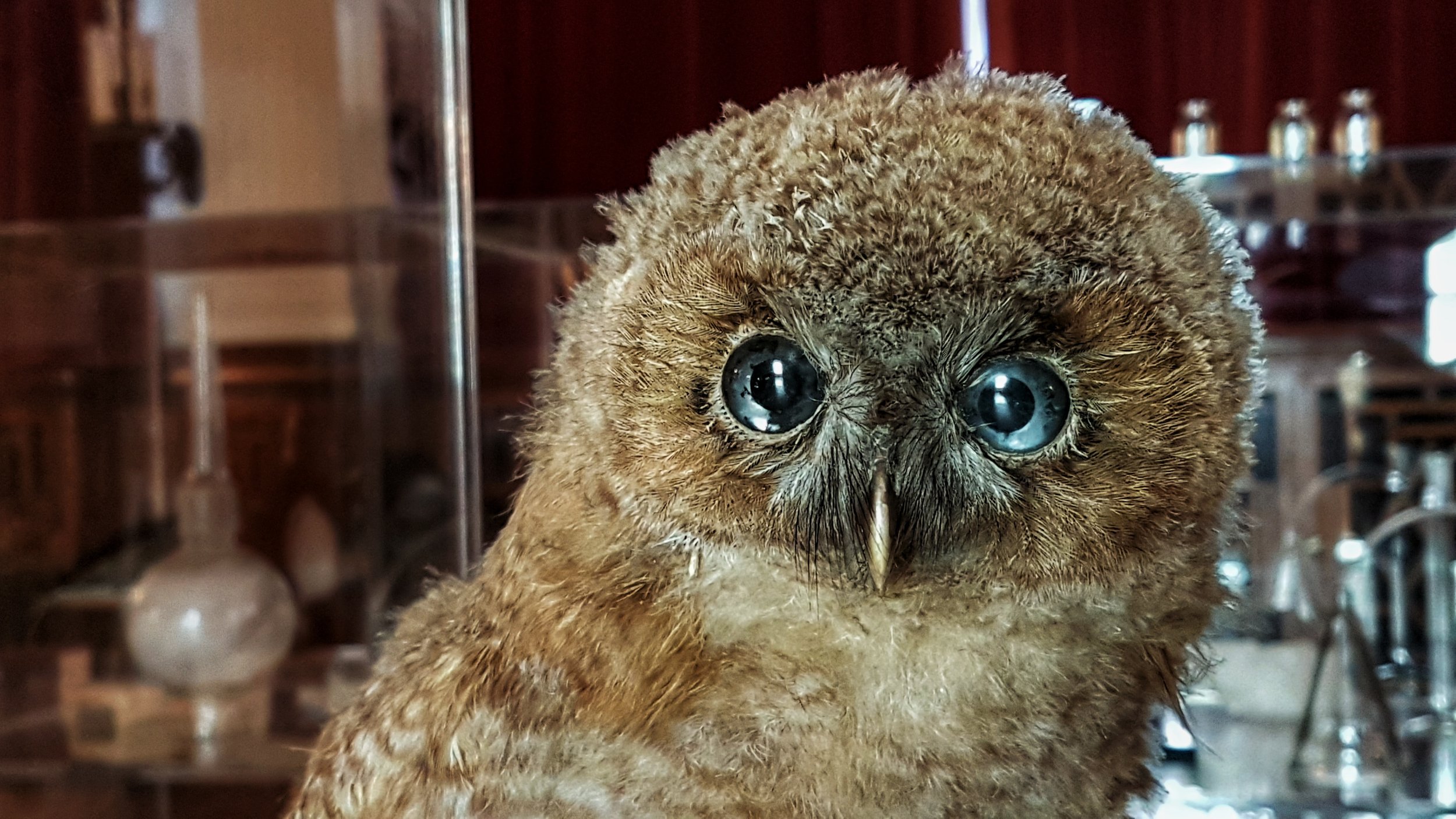
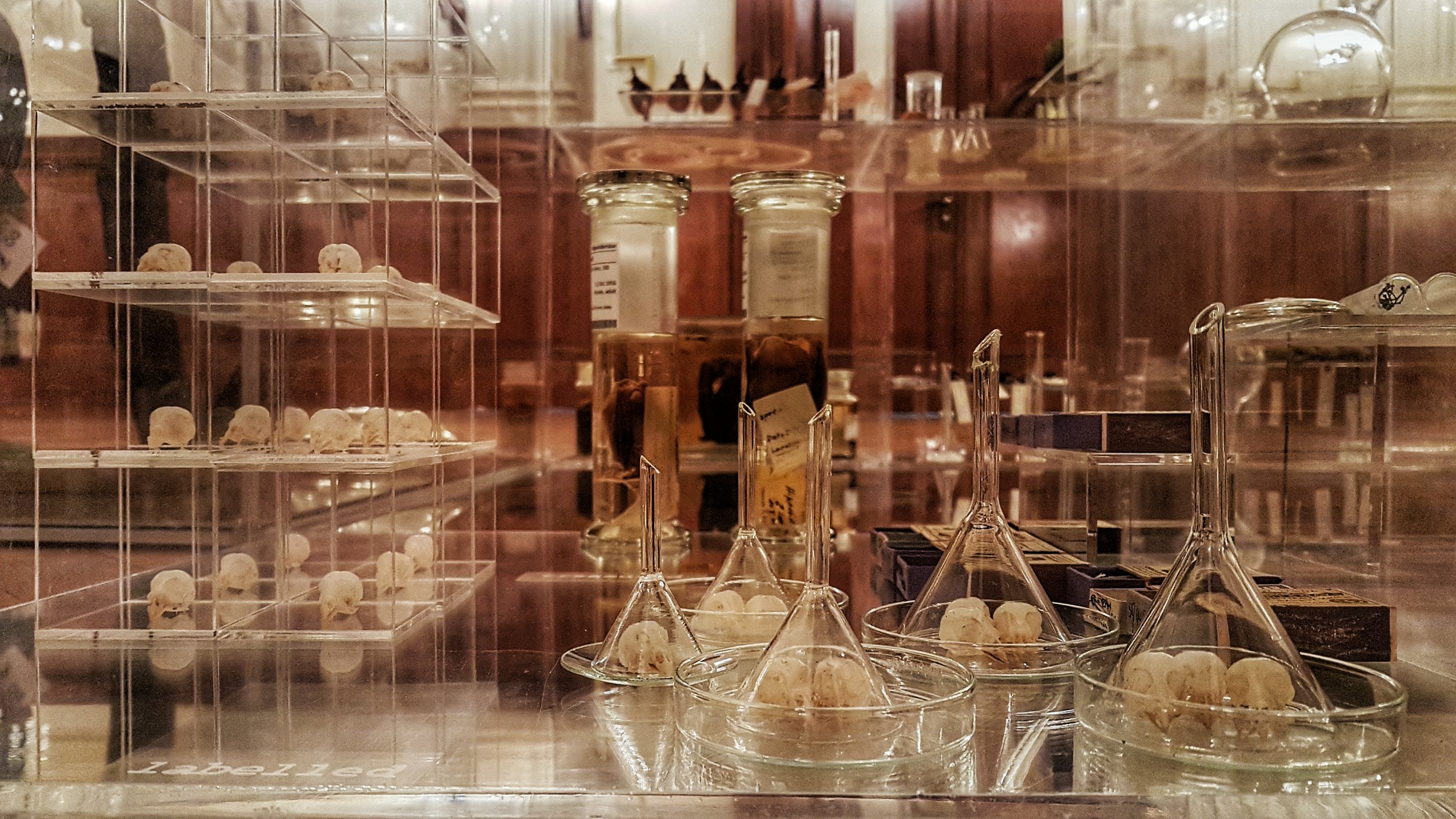
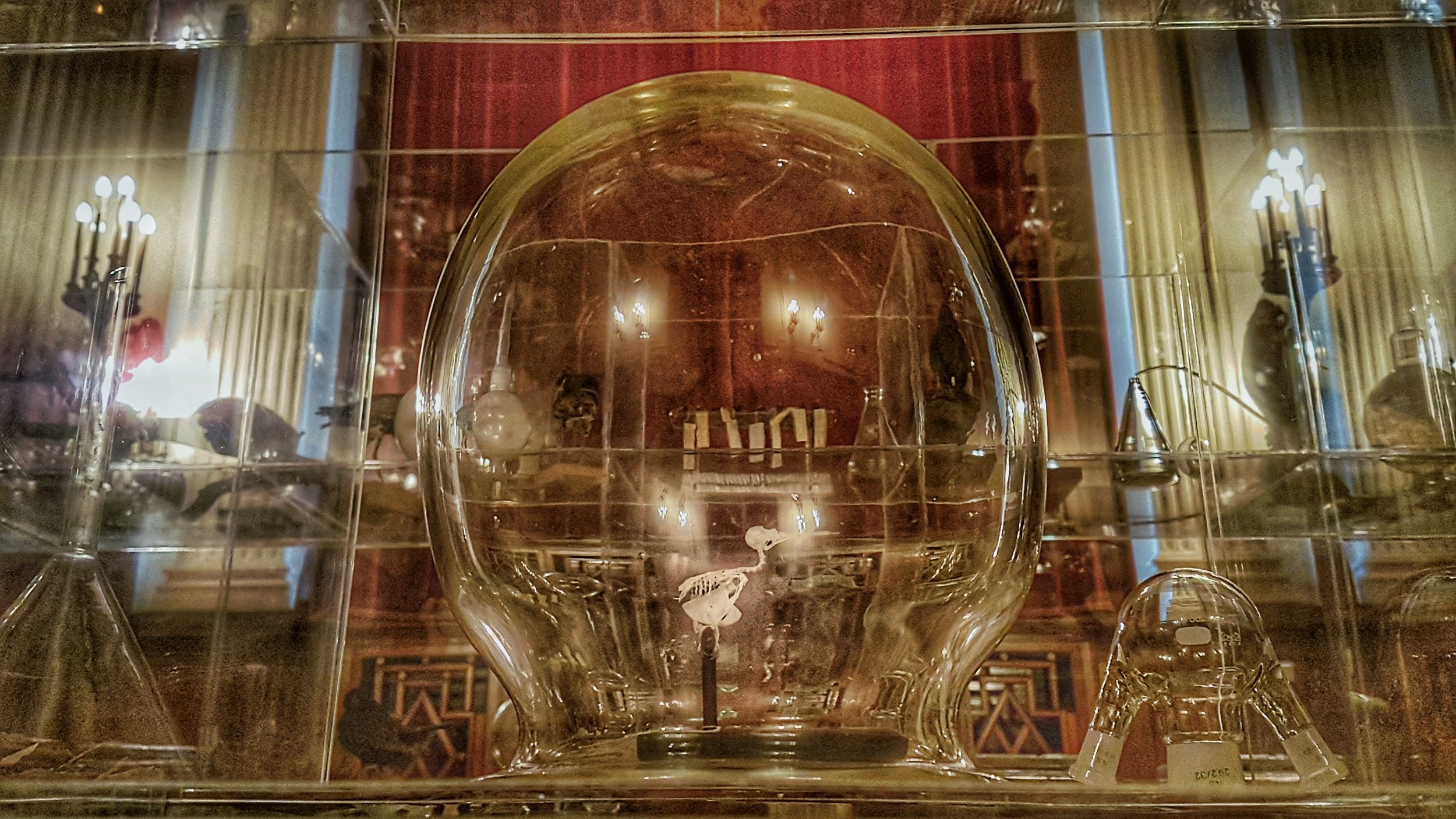
Nach der natur
Museum Koenig, Bonn, 2019
‘The Museum Koenig holds a great treasure of monuments of nature. Museums of natural history not only present to us what we have, but also what we have lost- species and individuals. They equally show us which narratives and memories are still at our disposal. We are confronted with a sinister afterlife that provides us with lessons on our place in the community of life.’ - Dieter Sturma, 2019
Acrylic, scientific glass, taxidermy, other museum specimens
Curated by Dieter Sturma, photography by Thomas Gerken


Lost Habitats
Oldenburg Schloss Nautilus Exhibition, Oldenburg, Germany
Shells from the Oldenburg Schloss Natural History Museum collection, lab glass
Photography by Sven Adelaide

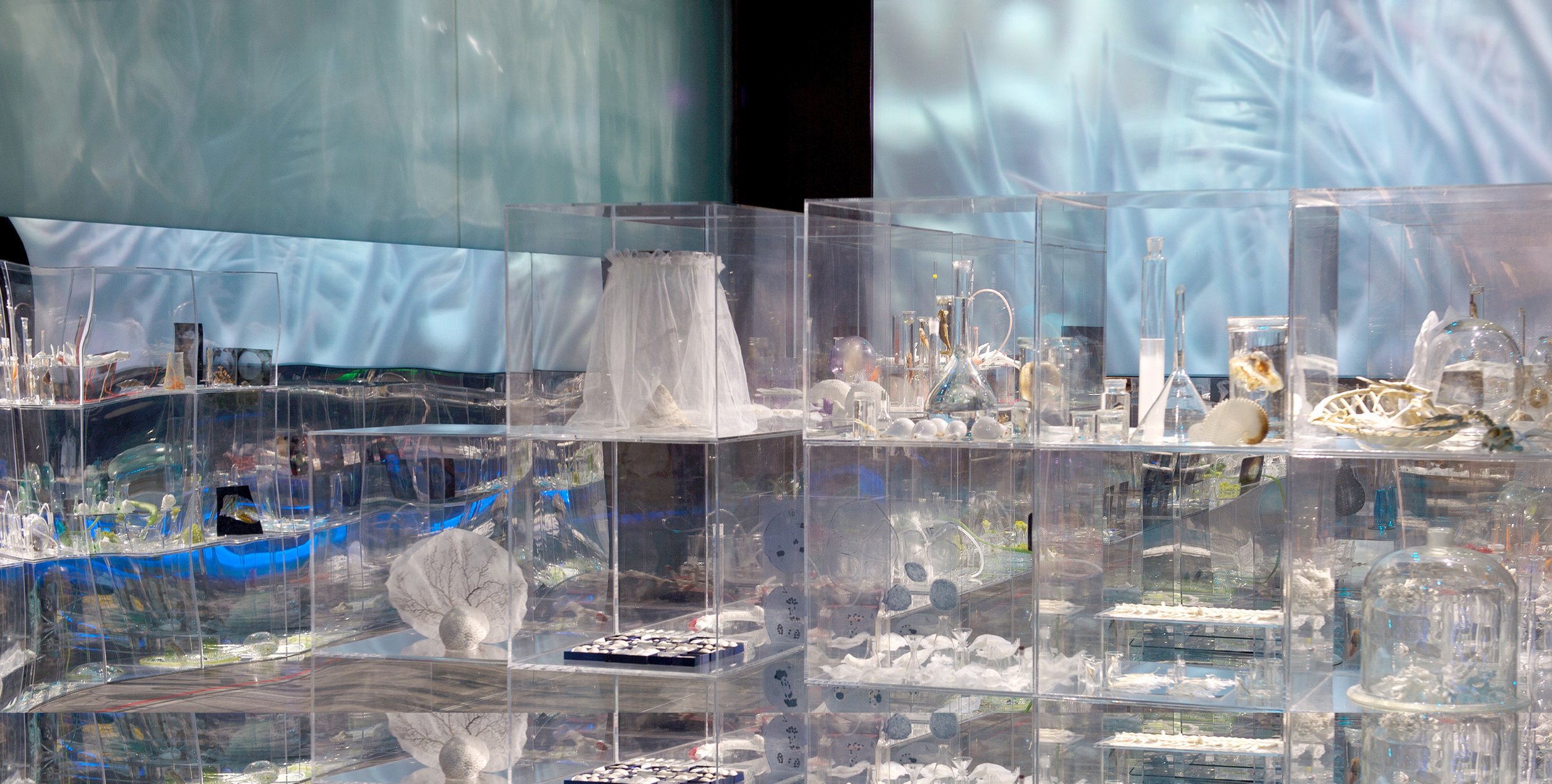




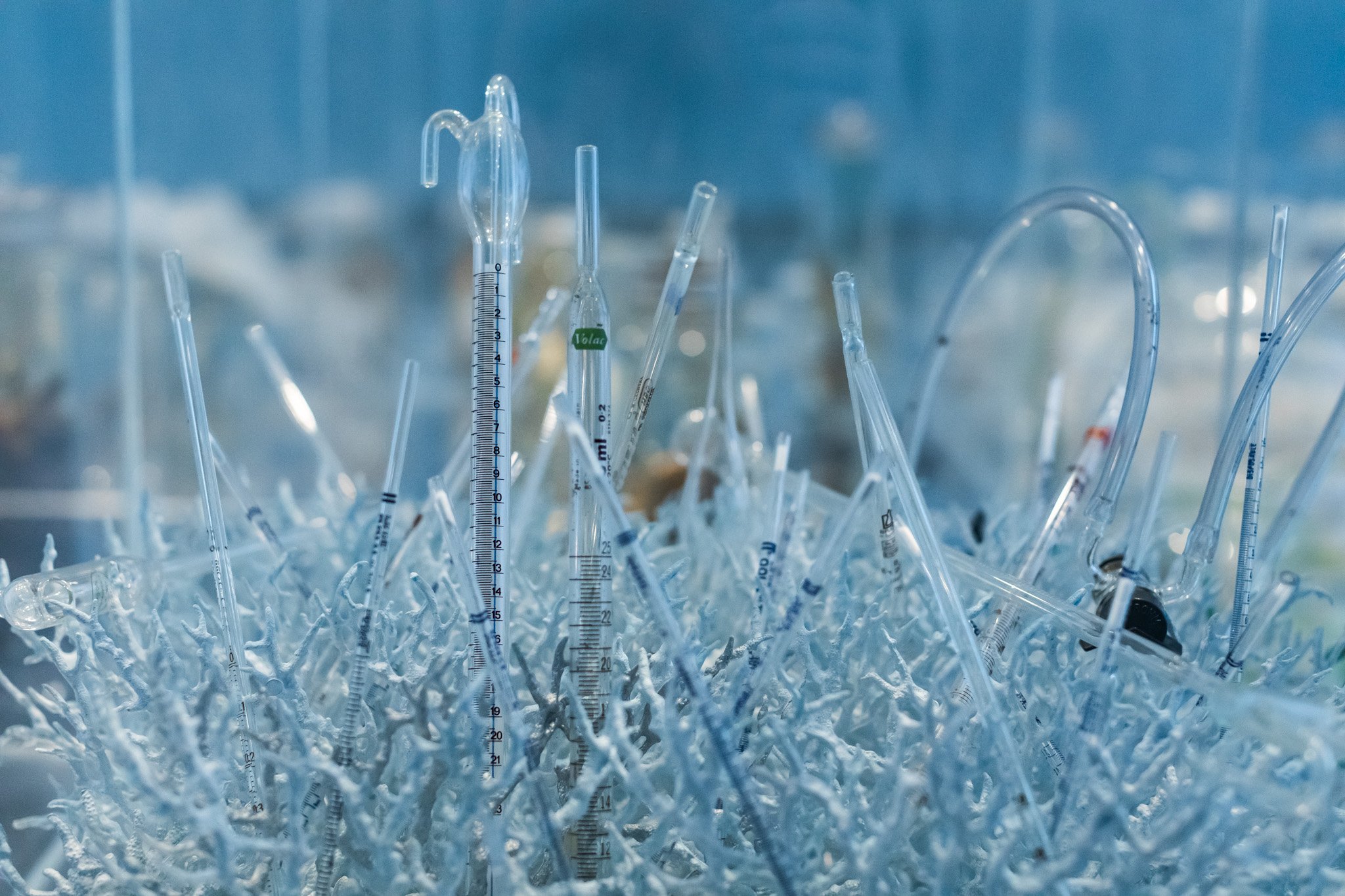



Deep Breathing: Resuscitation for the reef
Museum of Contemporary Art, Sydney, 2019
Australian Museum, Sydney, 2016
Artists 4 Paris Climate COP21, Muséum National D’historie Naturelle, Paris, 2015
Visitors can examine with empathy a vast range of materials, images, and projection along with specimens– drawn from the collections of the Australian Museum. The specimens are metaphorically being nursed and on life support. Making visible the invisible and offers hope for the healing of the natural environment. If we can care for marine life in the same way that we care for our own species, there is a chance of deflecting environmental catastrophe. Laurence’s response is a faint but deeply felt call, an emergency response: a hospital for the reef in this time of ecological crisis.
Corals, pigments, acrylic, laboratory glass, film projections, various wet specimens
Photography by Jacquie Manning and Benjamin Huie




Skullbone Plains
Work from a Tasmanian Land Conservancy residency in Skullbone Plains
Fleurieu Art Prize finalist, UNSW Galleries, 2016
College of Fine Art Gallery, UNSW
Queen Elizabeth Museum, Launceston, TAS
Transparency, plant materials, skeletal specimens, wood, mesh, duraclear images
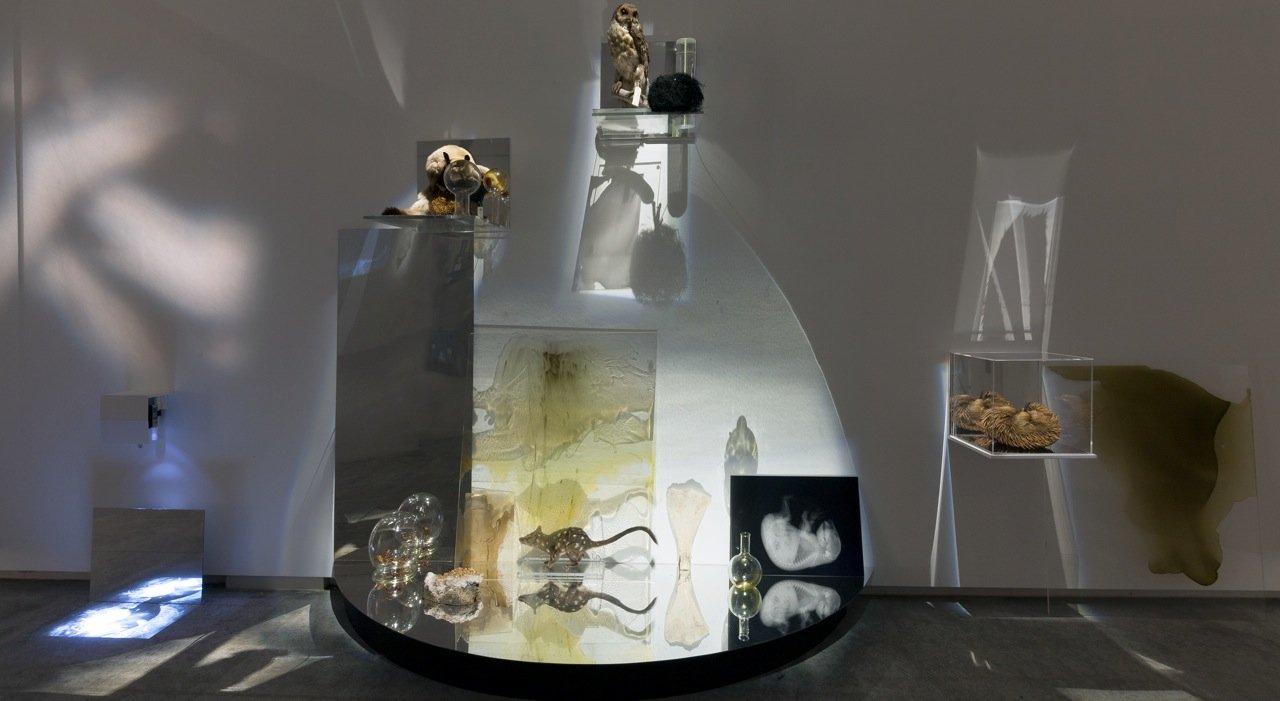





Fugitive
Animate/Inanimate, TarraWarra Museum of Art, Healesville, Victoria, 2013
Fugitive expresses our relationship to our fragile environment and an awareness that we are within the era of the ‘Anthropocene’. This ecological crisis demands us to shift our focus from a human-centred perspective to a broader multispecies, environmental approach, for how else are we to live ethically and find our place in this world.
Within the gallery space I want to bring us in to contact with the life - world. With a focus on the animals and their loss, I think about the loneliness of the last one of a species. What was their death? I wonder about their umwelt , the unique world in which each species lives.
Video, mesh, acrylic, steel, scientific glass, taxidermy specimens

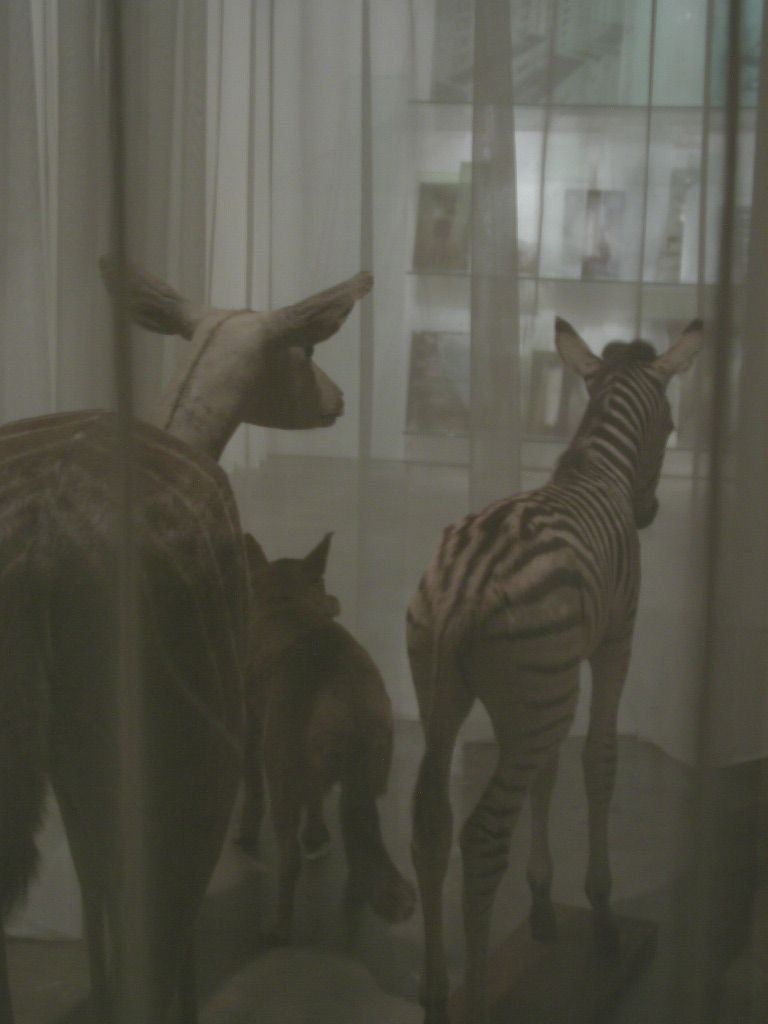
Fugitive In Light
Eden and the Apple of Sodom, Samstag Museum of Art, Adelaide, 2002
Video, mesh, acrylic, steel, scientific glass, taxidermy specimens
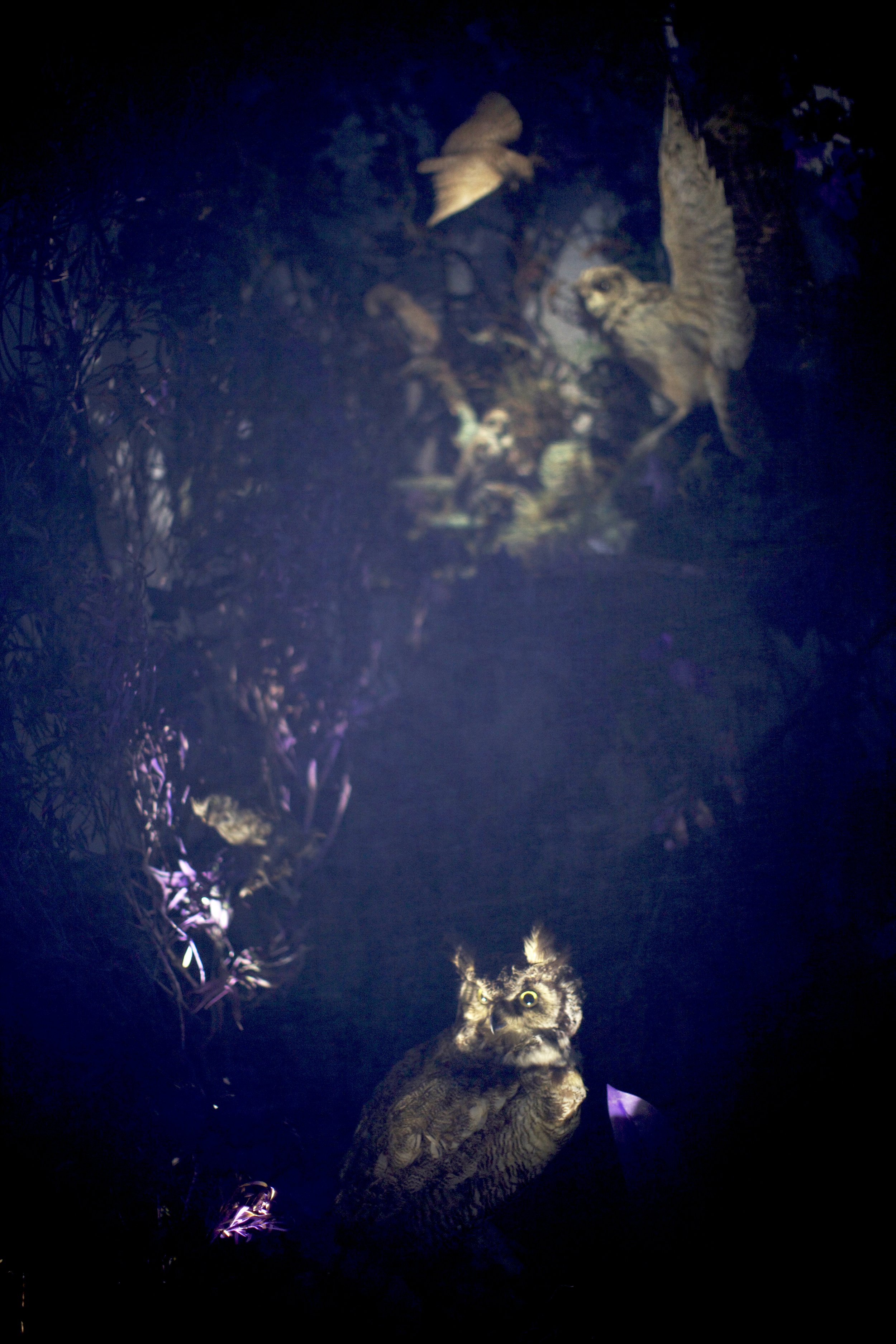

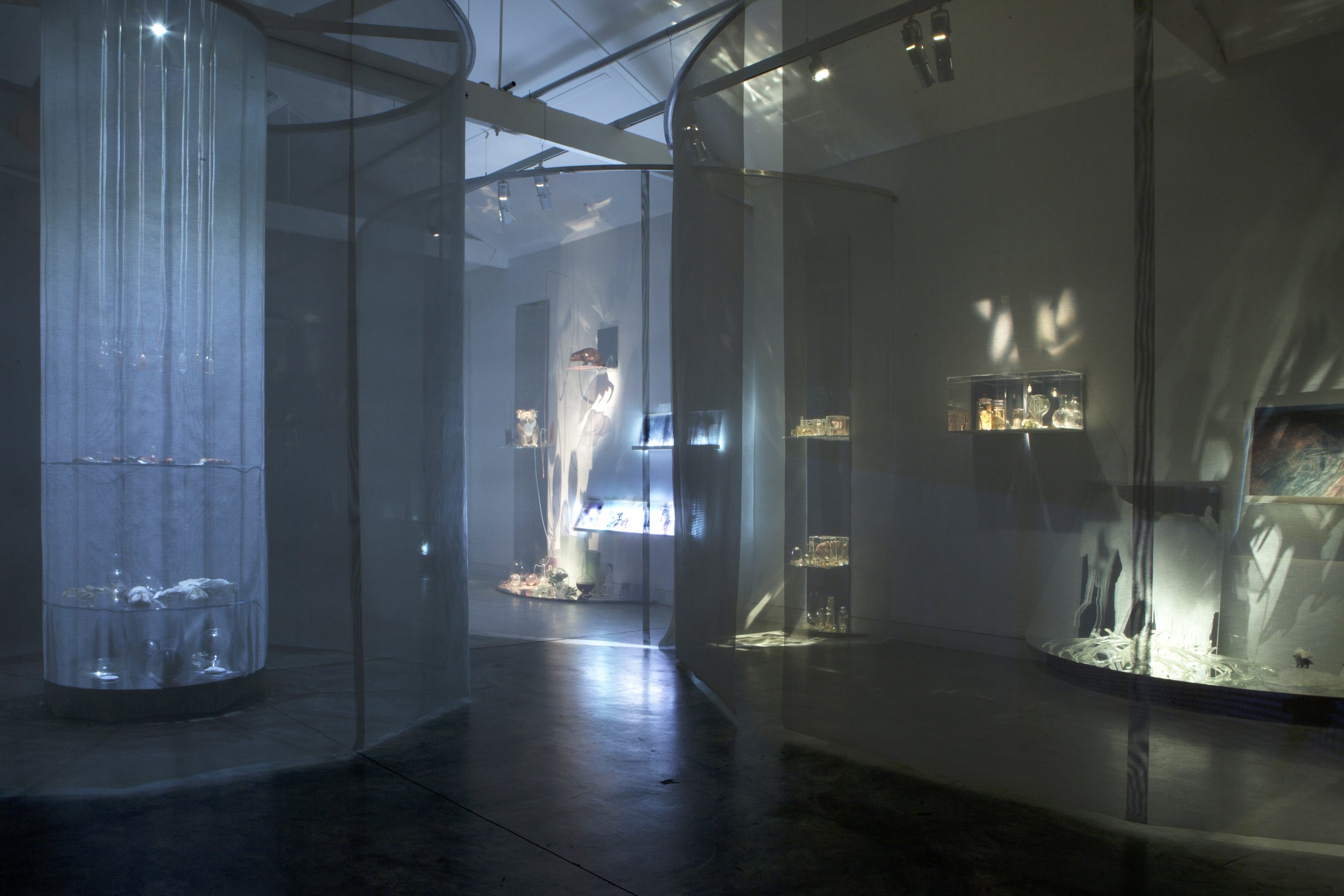
After eden
Sherman Contemporary Art Foundation, Sydney, 2012
Immersive, haunting installation that explored our fragile natural history through film, objects, specimens and light.
Video, mesh, acrylic, steel, scientific glass, taxidermy specimens




Fabled
Editions I and II, from the After Eden series, 2011
Flora & Fauna International Residency, Acheh, Sumatra, Indonesia, altered camera trap images, ink on archival paper




The Memory of Nature
Art Gallery of New South Wales collection, 2010
Acrylic, laboratory glass, dried plants, seeds, sulphur, salt, amethyst, taxidermy owls, shellac, tulle, wood, burnt bones, hand bones, hand-blown glass, oil paint, mirrors



Vanishing
Clemenger Art Award, National Gallery of Victoria, Melbourne, 2009
Two-channel video, sound, transparent tulle veils, audio visuals in collaboration with Gary Warner
Curated by Jane Devery


Carbon Futures
exhibition view from The Museum Effect at Lake Macquarie Art Gallery, 2008-2012
A series of blown glass eggs in collaboration with Gabriella Bisetto. Each egg contains a different botanical species that effected the degree of burning within the glass.
Glass, carbonised botanical specimens, 30 x 25cm glass blown by Gabriella Bisetto



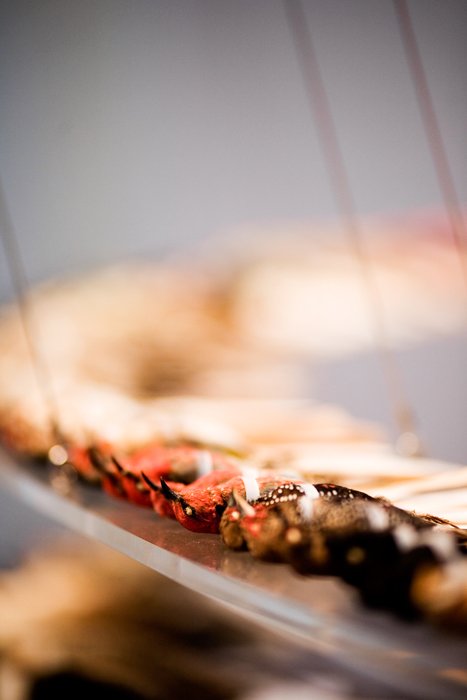
Birdsong
Entangled Garden of Plant Memory, Yu-Hsiu Museum, Taiwan, 2020
After Nature, Museum of Contemporary Art, Sydney, 2019
Object Gallery, Sydney, 2006
Taxidermy bird specimens, suspended acrylic, sounds of bird calls and wing flutters
Audio edited by Ross Gibson and Jane and Phillip Ulman, photos by Keith Saunders
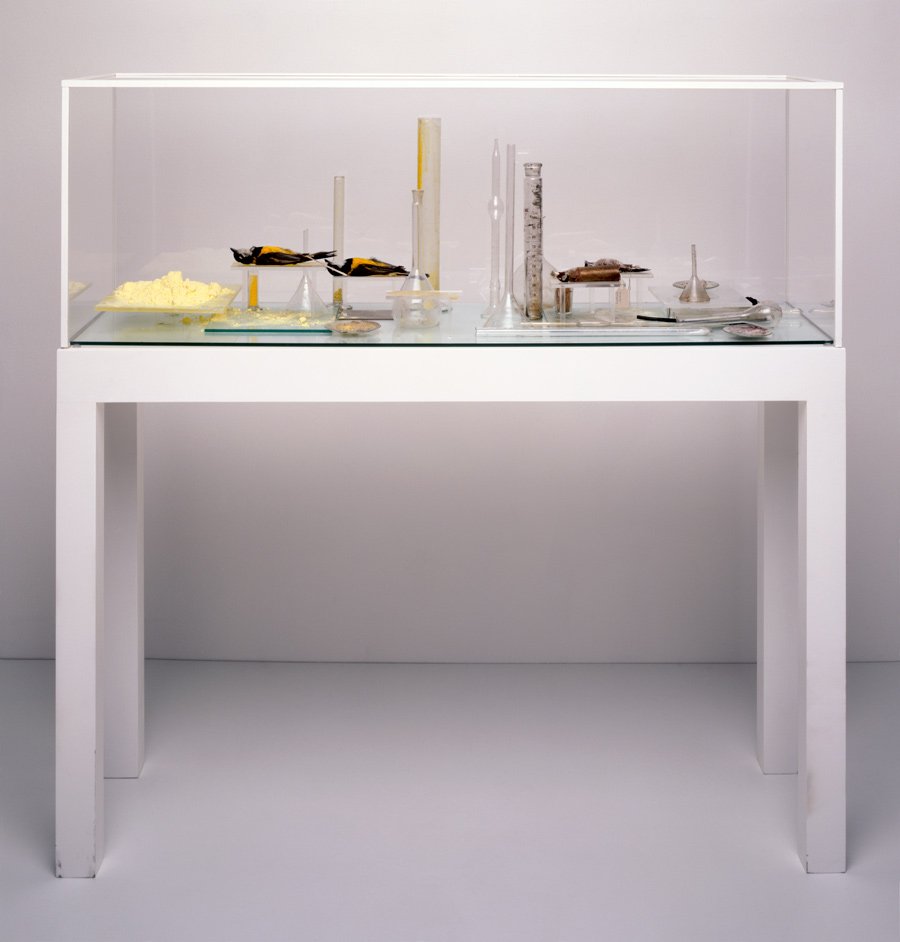
Matter of Nature
Art Gallery of New South Wales collection, 2000
Glass, sulphur, gold, calcium, carbon, salts, oxides, oil, wax, acrylic, resin, natural history specimens


Unfold
Project space, The Art Gallery of New South Wales, Sydney, 1997
Hanging Duraclears, minerals, pigment glazes, images from Naturhistorisches in Vienna


Breathing
installation view Australian Perspecta, Sydney, 1991
250 bales of straw, taped sound, low voltage lights
Photography by Tim Marshall



